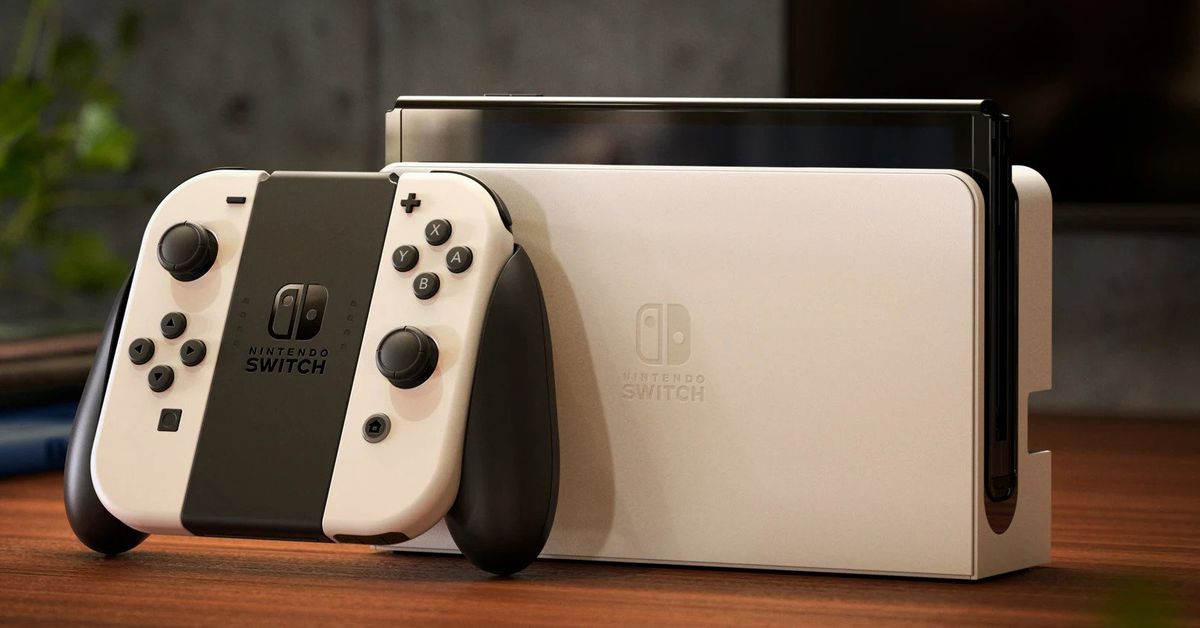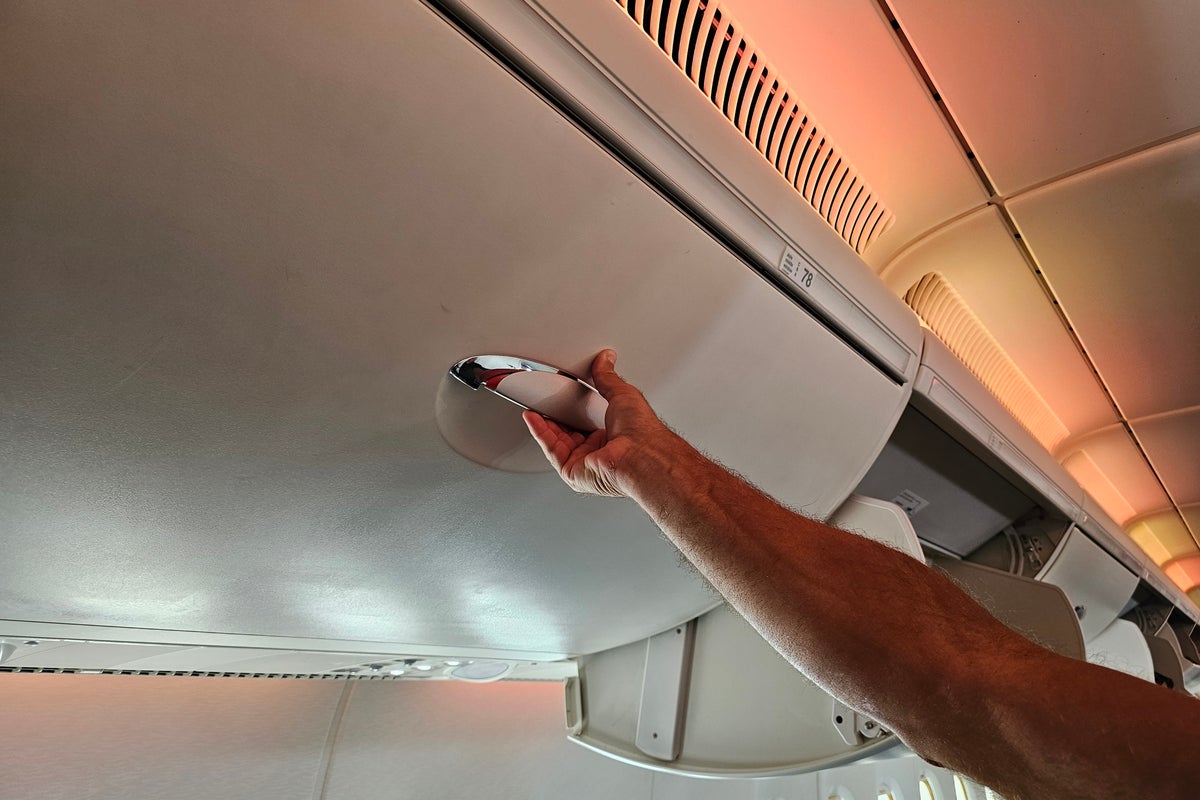Sonos Era 300 and Era 100 first look: you’re gonna want to hear these speakers
Both Era speakers launch together on March 28th. | Photo by Chris Welch / The VergeAvailable for preorder today and shipping March 28th, both speakers make a good first impression with new features and upgraded sound. Continue reading…
/cdn.vox-cdn.com/uploads/chorus_asset/file/24484295/DSC08491_2.jpg)
After months of leaks and some recent coordinated teases from the company itself, Sonos is finally officially announcing the Era 300 and Era 100 speakers. Both devices go up for preorder today — the Era 300 costs $449 and the Era 100 is $249 — and they’ll be available to purchase in stores beginning March 28th.
As its unique design makes clear, the Era 300 represents a completely new type of speaker for the company; it’s designed from the ground up to make the most of spatial audio music and challenge competitors like the HomePod and Echo Studio.
The Era 100, meanwhile, is a follow-up to the Sonos One smart speaker that should offer substantially better sound quality at a slightly higher price. Both products support Bluetooth playback and USB-C line-in audio (via an adapter), providing Sonos customers with more flexibility in how they listen.
Era 300: Sonos’ take on spatial audio
Sonos has been working on the $449 Era 300 (codenamed Optimo 2) for around three years, according to CEO Patrick Spence. Even at the project’s start, and this was before Apple went all in on spatial audio, Sonos saw a clear trend line of the music industry embracing the new format and wanted to build a single-unit speaker capable of properly showcasing it.
Image: Sonos
There were dozens of initial prototypes before Sonos settled on three final contenders that all looked very different. The winner ended up being the unique “hourglass” design that’s proven somewhat divisive after people got a first glimpse through leaks. Having now seen it up close, I think the Era 300 plays better in person than in marketing photos, where it has a way of appearing bigger than it really is. Measuring 6.3 inches high, 10.24 inches wide, and 7.28 inches deep, it fits just fine on a bookshelf without calling much attention to itself. A little large for a bedside table, perhaps, but between those two images, you get the idea.
Inside the Era 300 are six drivers. The speaker’s four tweeters point forward, left, right, and up, while a pair of angled woofers handle low-end output. That architecture is meant to spread sound all over the room regardless of whether the current track is stereo or spatial audio. Thankfully, Sonos won’t be forcing virtualized spatial mixes on your stereo content. The Era 300 respects whatever original format is being played, though it does use the added drivers for greater stereo presence.
Image: Sonos
Sonos will support spatial playback from both Apple Music and Amazon Music at launch. That makes it the first third-party smart speaker to natively play Dolby Atmos tracks from Apple. As for home theater, two Era 300s can serve as multi-directional rear surrounds (and that includes upwards-firing Atmos height channels for the first time). At $900 for a pair, it’s an expensive proposition. But if you’re willing to invest in an Arc, Sub, and two 300s, Sonos says you’ll end up with a 7.1.4 system.
Wait. 7.1.4? How does that add up?
There’s been some confusion over this, so I asked Jeff Derderian (VP of product program leadership at Sonos) for a breakdown. According to him, the Sonos Arc delivers front center, left, and right channels, so that puts you at three. Meanwhile, the two Era 300s in back each output standard rear channels (four and five) and work together on expanded left and right (6 and 7). The four height channels are a combination of the Arc and 300s. Combine all that with the Sub, and that’s how you come out with 7.1.4 Atmos.
With the usual disclaimer that we heard the Era 300 in a controlled demo environment, it sounded pretty great. Giles Martin, Sonos’ sound experience leader, played both stereo and spatial audio tracks during a recent press briefing. The spatial tracks noticeably had an extra tick of immersion to them, but I’ll need more firsthand listening to really assess what the 300 is capable of. Plus, a lot of spatial audio mixes are still mediocre. Sonos says it’s giving Era 300s to studios and producers so they’ll hear mixes the same way owners of the speakers will at home.
We also heard a pair of 300s demoed as rear surround speakers for an Arc. Again, the results were impressive. But you’ve really got to weigh whether it’s that much better than what you’d get from much cheaper Sonos speakers that can also serve as rears — albeit with no height effects.
Era 100: a better baseline speaker
The $249 Era 100 (codenamed Optimo 1) is an improved Sonos One on multiple fronts. It’s slightly larger and more rounded, but bigger changes await inside. It now has two tweeters for proper left and right stereo reproduction. Obviously, you can’t expect miracles in terms of separation from a speaker this small, but at least you shouldn’t notice anything getting lost in the mix, which could happen with the One. Sonos tries to enhance sound dispersion further with custom waveguides, and the woofer has been enlarged for more powerful bass response than the One was capable of.
Photo by Chris Welch / The Verge
So there are clear audio enhancements, but perhaps equally exciting is just how much more the Era 100 can do. Sonos is including Bluetooth audio playback — you enter pairing mode by pressing a button on the back of the speaker — and USB-C line-in support. The latter will require a $19.99 adapter that’s also available for preorder today. If you want to plug either speaker into ethernet, you’ll need the $39.99 combo adapter.
Sonos previously mocked Bluetooth speakers with a memorable ad. But the company believes it’s gotten to a more reliable place, and the simple reality is that Bluetooth makes life easier when friends come to your place and want to play some of their own music. With line-in, you’ll be able to plug a turntable into your speaker and play it across your entire Sonos system, which is something that previously required the Port ($449), Sonos Five ($549), or Roam (but only for turntables with Bluetooth).
Image: Sonos
The Era 100 is technically replacing the Sonos One in the company’s product lineup, but the latter isn’t being discontinued immediately: Sonos wants to give current owners more time to buy another One for a stereo pair, for example. And since there’s a physical switch for shutting off the mics on both new Eras, Sonos isn’t (yet,) offering a cheaper “SL” model of the Era 100. So the One SL will retain some unique value while supplies last.
Image: Sonos
Google Assistant is MIA on Sonos’ new speakers
The Era 300 and 100 include far-field microphones for hands-free voice commands. They’ll ship with support for the company’s own Sonos Voice Control, which remains focused predominantly on music commands (though it can now do timers), and Amazon Alexa for smart home controls and more.
For now, Google Assistant is absent from both speakers. Sonos says this is due to changes that Google has implemented for companies that want to run the voice service on third-party hardware. Patrick Spence claims it’s unrelated to the ongoing legal battle between the two companies and insists Assistant is now more of a “heavy engineering lift” than it was before. “Right now, we don’t see it being worth the effort. We hope Google will take another path that will allow us to continue to offer it in more of a lightweight manner the way we do today. But we also feel well covered with what we have with both Alexa and Sonos Voice Control.”
Photo by Chris Welch / The Verge
More intuitive controls and Trueplay on Android
There’s a new indented bar on the Era 300 and 100 that’s used for volume controls. You can tap each side to adjust it or just swipe your finger across in either direction if that’s preferable. Sonos is also including dedicated track controls on both products.
Photo by Chris Welch / The Verge
For the first time, Android phone owners will also be able to take advantage of Sonos’ Trueplay feature, which optimizes a speaker’s output based on the acoustic traits of its environment. It does this by using microphone readings from an iPhone or iPad; for years, Sonos didn’t offer Trueplay on Android because there are endless devices with unique mic characteristics. But now the company has a solution: quick tune.
When activated on an Android phone, this version of Trueplay will use the built-in mics on an Era 300 or 100 to analyze the room and improve sound performance. Sonos tells me the iOS approach, now known as “advanced” tuning, still produces slightly better results. But at least Android users now have something. The process is never automatic; you need to run Trueplay in the Sonos app either way.
Stay tuned for our full review of both new Sonos speakers in the coming weeks. And if you’ve got any questions while I’m testing them, however big or niche, feel free to drop them in the comments.

 MikeTyes
MikeTyes 































